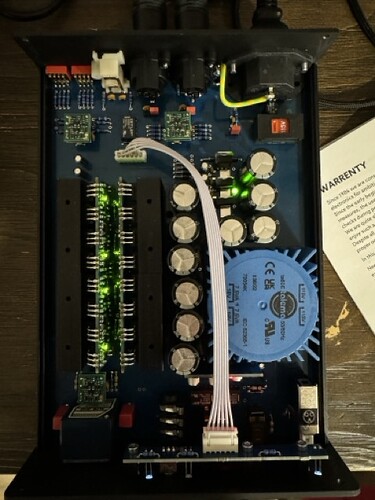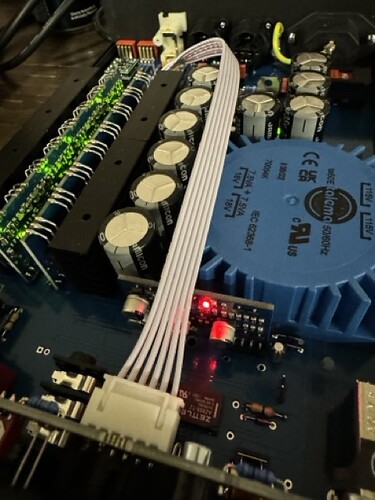I’m a total op amp neophyte, and I am 100% out of my depth on this, so I’m hoping one of you can offer some guidance. I also posted this over on Head-Fi, so I am sorry for duplicating content, but I want to get as many opinions as possible on this!
The Problem:
I put the Sparkos SS3602 in each of the op amp slots in my Violectric V222. They made an immediately noticeable improvement in sound. Then I turned it off, and when I turned it back on, no sound. Turning it off and back on again, it works fine. This happens like clockwork. Every other time that I turn it on, the lights on the front come on, but no music.
What I have tried:
It doesn’t matter how long I wait between powering off and on, it is the same behavior. I also tried putting the original op amps back in, and the behavior returns to normal, works every time. With the stock op amp in the volume pot position and the Sparkos at the inputs, it still happens. Using the 3 SS3602s I have, I rotated each one out in the input positions, and same problem each time, so no faulty op amp. I also tried all permutations of the ground, lift, chassis jumpers (Keeping both L & R channel the same) with both the lift and ground setting for the main power jumper - no change. I have tried switching inputs and changing to a couple of different pre-gain settings with no change to behavior.
More investigation:
(Photos below) I opened the amp, and, not touching anything at all on the inside while it is plugged in, I turned the device on, and I see 11 total lights. 8 green on the main amplifiers, 2 green in the middle of the large electrolytic capacitors, and 1 red on a small vertical board in front of the other internal components. From what I have read in the manual, there is a DC protection circuit that disconnects power to the headphones if DC is detected. My theory is that a relay is activating to turn on the DC protection circuit when powering down the amp. There is a sound of a relay clicking very shortly after turning the power off, and the red light on the front board comes on for just a second. When turning the amp back on, that red light is illuminated and there is no sound. One of the green lights in the pair among the capacitors is off when this happens, but the other 9 are still on. When I turn it off again, then back on, all of the green lights are back on and the red light is gone and music plays.
Photos:
Amp is playing correctly - 8 green lights on the left, 2 on the right, no red light:
Amp is not working - no sound playing - 8 green lights on the left, 1 green light on the right, and red light on in the front:
Red light on front alternate view - amp not working - no sound:
My questions:
-
Is there a way to keep the Sparkos op amps in and fix the behavior?
-
I don’t mind turning on the amp twice each time as long as I am not harming it, and it sounds awesome with the Sparkos, so does anyone think this might be causing a problem for me down the line?
-
Can anyone explain why this might be happening?
-
Is it bad that warranty is misspelled in the manual? I just noticed that in the second photo, lol
Thanks for your help everyone!


